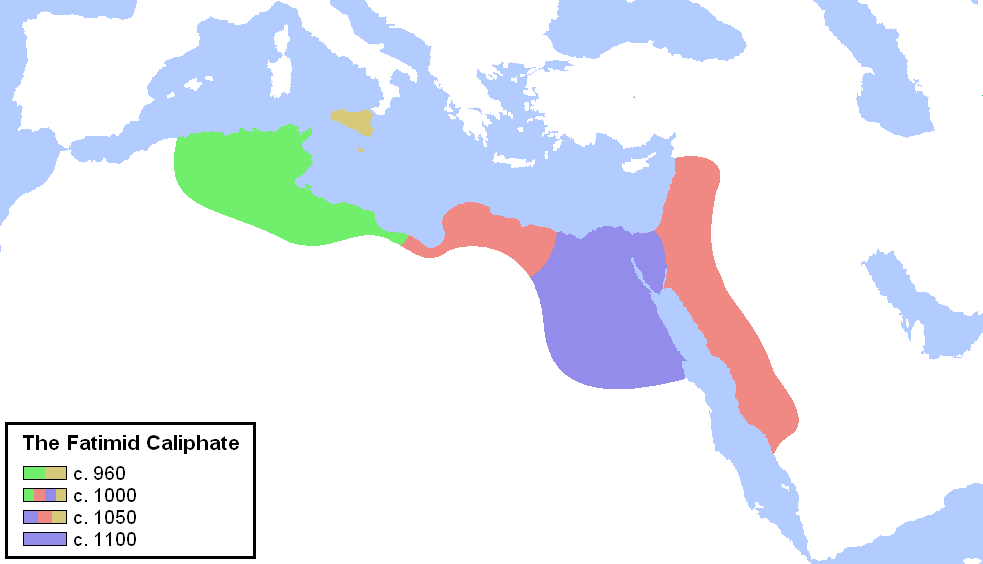3300-1550 BCE
- Various Canaanite City-States self-governance
-

The beginning of the Bronze Age and the beginning of early writing. This period starts with migration of nomads to Palestine and formation of fortified city-states. The city-states were then abandoned for 200 years (2200-2000 BCE) and resettled by new people, Canaanites, among them the Canaanite tribe of the Israelites.
1550-1200 BCE
- Kingdom of Egypt occupation by kingdom
-
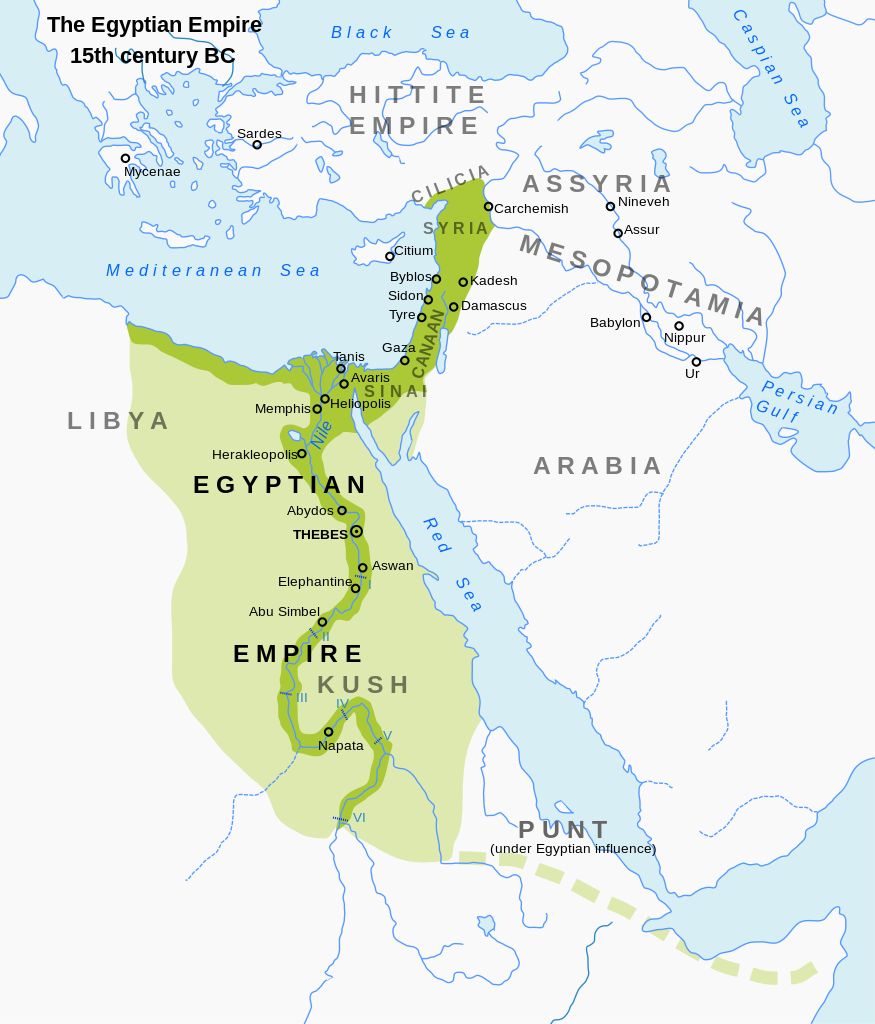
In 1550 BCE, Pharaoh Ahmose I, who reunified Egypt and founded the 18th Dynasty, embarked on a military campaign that resulted in the takeover of Canaan, which became an integral part of the Egyptian empire.
In 1200 BCE, Egypt underwent a decline in power and internal instability, coinciding with the onset of the Late Bronze Age Collapse, a preiod marked by invasions and attacks of The Sea People, among them the Philistines.
1200-1050 BCE
- Israelite Tribal Confederation self-governance
-
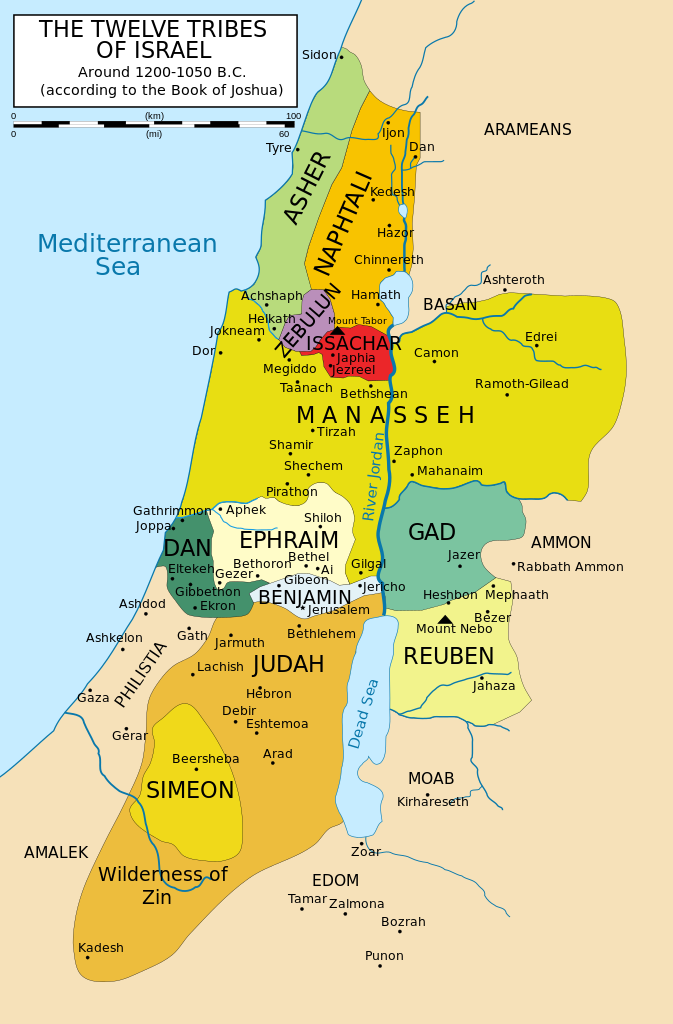
After the exodus from Egypt, which is narrated in biblical texts, the Israelites returned to Canaan and settled it.
Modern scholars propose that the end of the oppressive Egyptian rule of Canaan may have inspired the Exodus narrative, along with the expulsion from Egypt of the Hyksos, a semitic group that may have returned to Canaan after the expulsion and at least some blended with the Israelites.
The facts are that since around 1200 BCE an Israelite tribal confederation exists in Canaan, as evidenced by the Merneptah Stele (1208 BCE). These tribes, each named after a son or grandson of Jacob (also known as Israel), settled in various regions of the land.
Initially, they operated as a loose confederation, united mainly by their shared faith and the threat of external enemies. It was only during the threats posed by surrounding entities, notably the Philistines, that the tribes felt the need for a centralized form of governance, leading to the anointing of Saul as the first king and the eventual establishment of the United Kingdom of Israel.
1050-930 BCE
- United Kingdom of Israel self-governance
-

Under Kings Saul, David, and Solomon, the Israelites established a united monarchy. The First Temple was built during Solomon's reign.
930-586 BCE
- Kingdoms of Judah and Israel self-governance
-
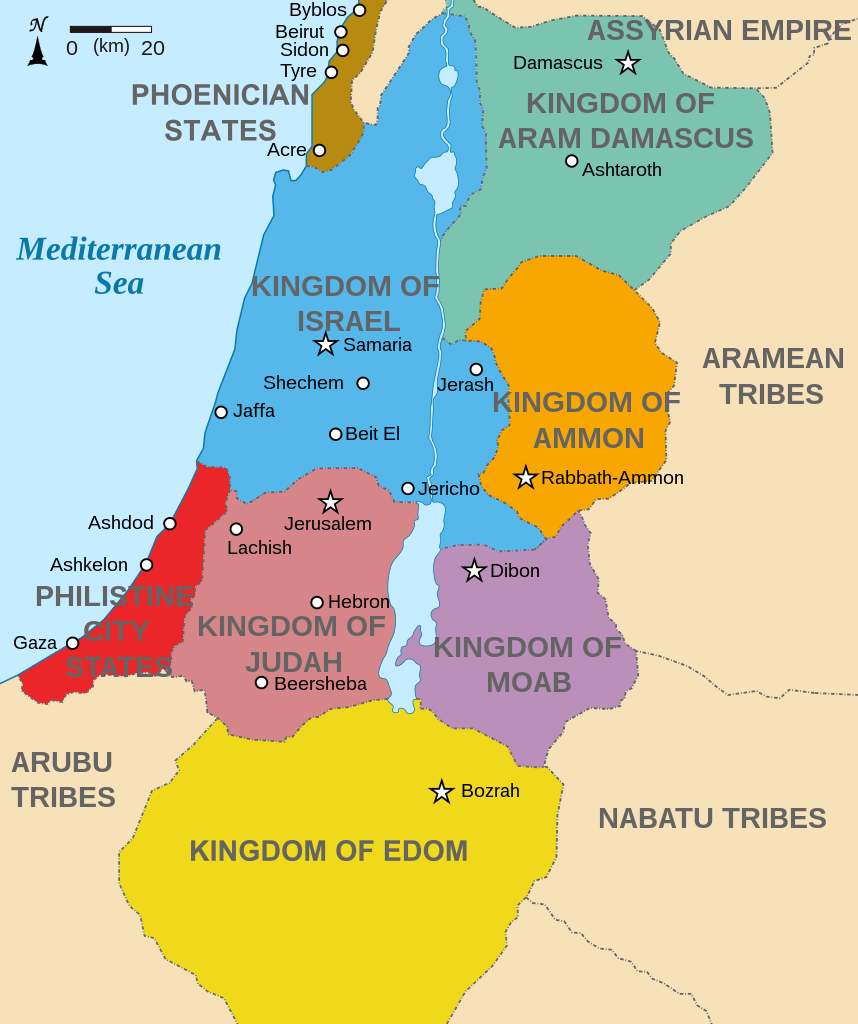
Following a civil war, the united monarchy of Israel split into the northern Kingdom of Israel and the southern Kingdom of Judah.
Read more on Wikipedia about The Kingdom of Israel and The Kingdom of Judah
-
Neo-Assyrian Empire
 occupation by empireexpulsioncolonization
occupation by empireexpulsioncolonization
-
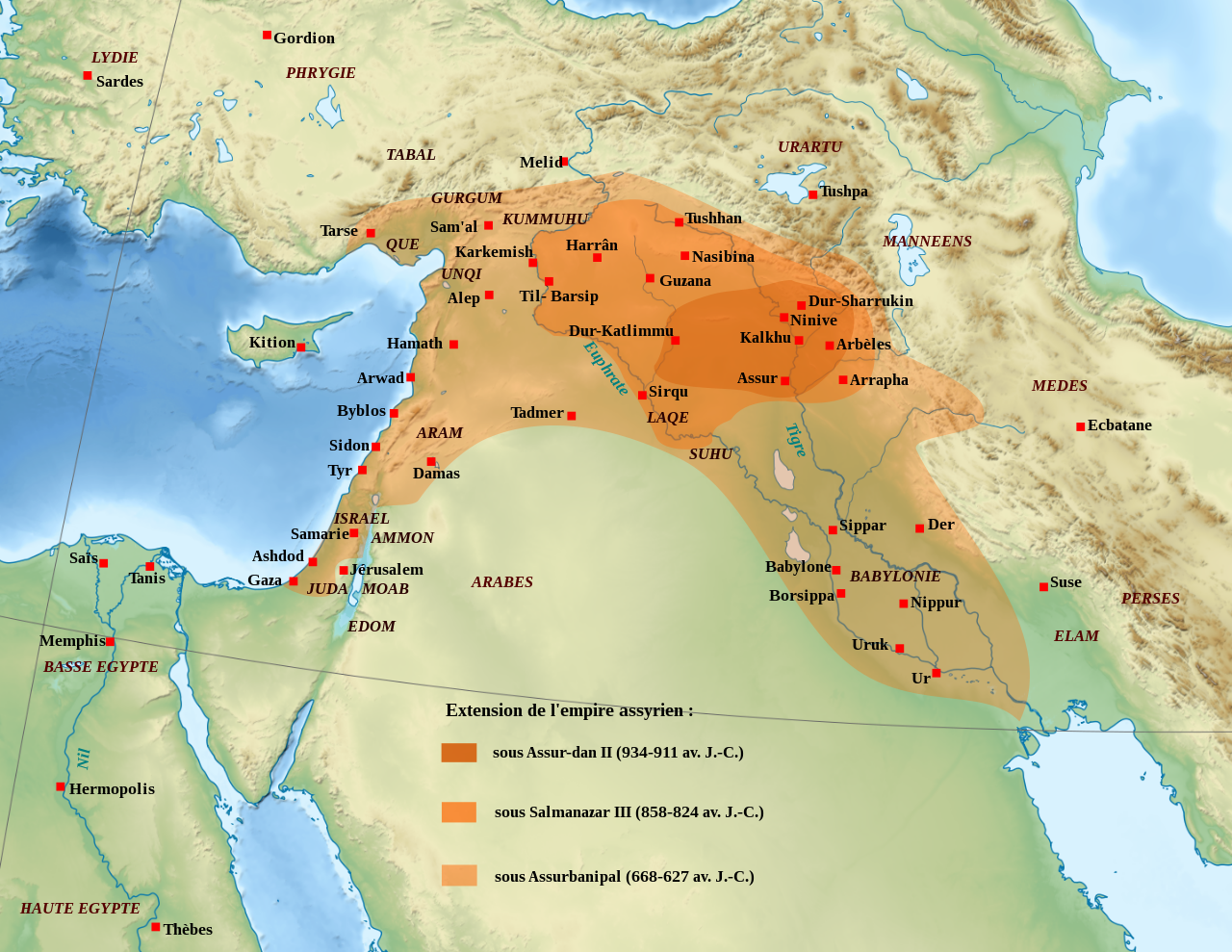
In 722 BCE the northern kingdom of Israel fell victim to the Neo-Assyrian conquest when the capital city of Samaria was captured, leading to the expulsion of a considerable portion of the Israelite population, some were deported to Assyria and the rest fled to the Kingdom of Judah. The Assyrians brought other people to settle in Samaria, their descendants are the Samaritans. The southern kingdom of Judah faced similar threats and Jerusalme faced an unsuccessful siege in 701 BCE.
586-539 BCE
-
Neo-Babylonian Empire
 occupation by empireexpulsion
occupation by empireexpulsion
-
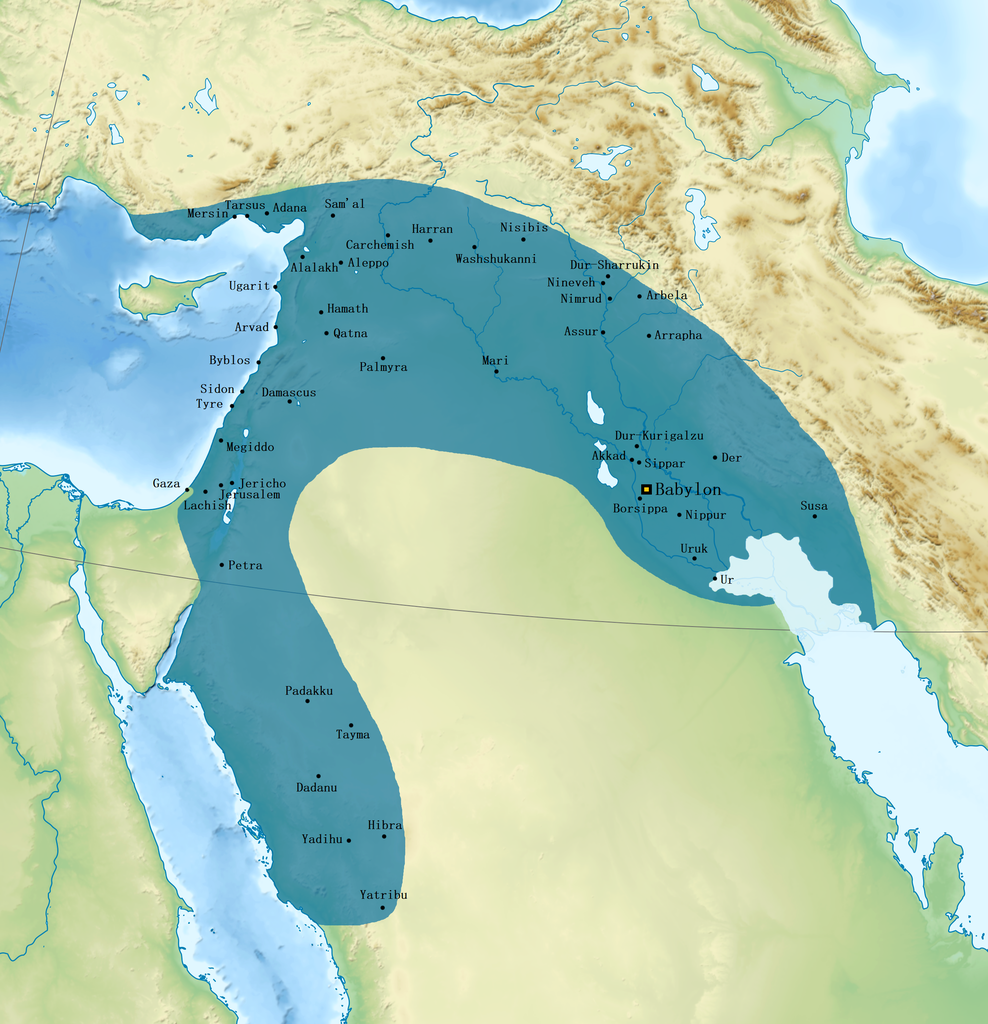
Under King Nebuchadnezzar II, the Babylonians destroyed Jerusalem and the First Temple and exiled many Jews to Babylon.
539-332 BCE
-
Persian Achaemenid Empire
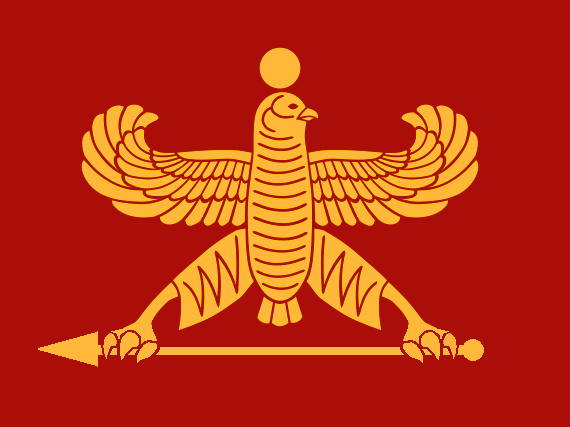 occupation by empirelimited self-governance
occupation by empirelimited self-governance
-
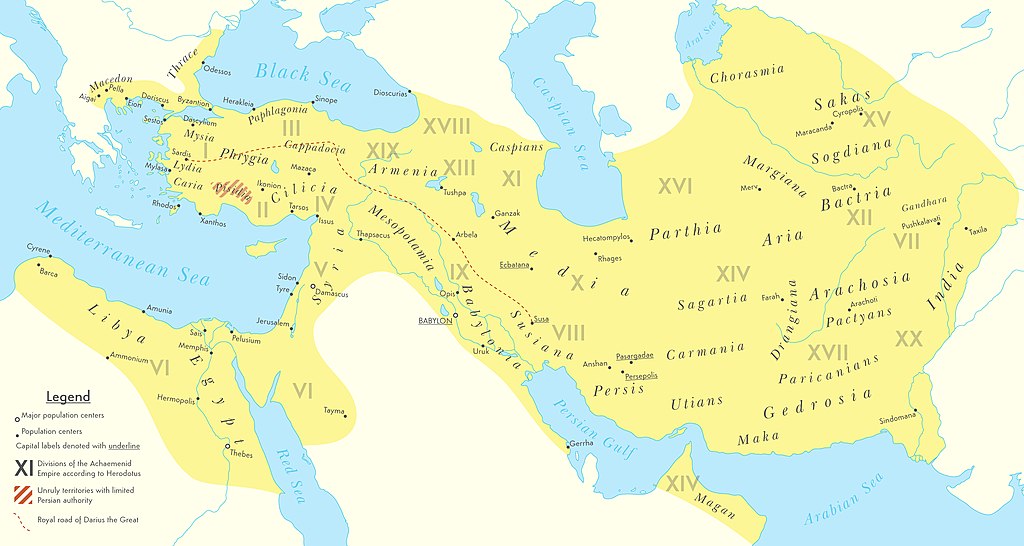
After defeating the Babylonians, the Persians ruled the area and allowed the Jewish exiles to return and rebuild the Temple in Jerusalem.
332-301 BCE
-
Macedonian Empire
 occupation by empirecultural conversion
occupation by empirecultural conversion
-

The Hellenistic period began with the conquest of the country by Alexander the Great in 332 BCE. Immediately after Alexander’s death in 323 BCE wars began among his successors.
- Wars of the Diadochi ongoing war
-
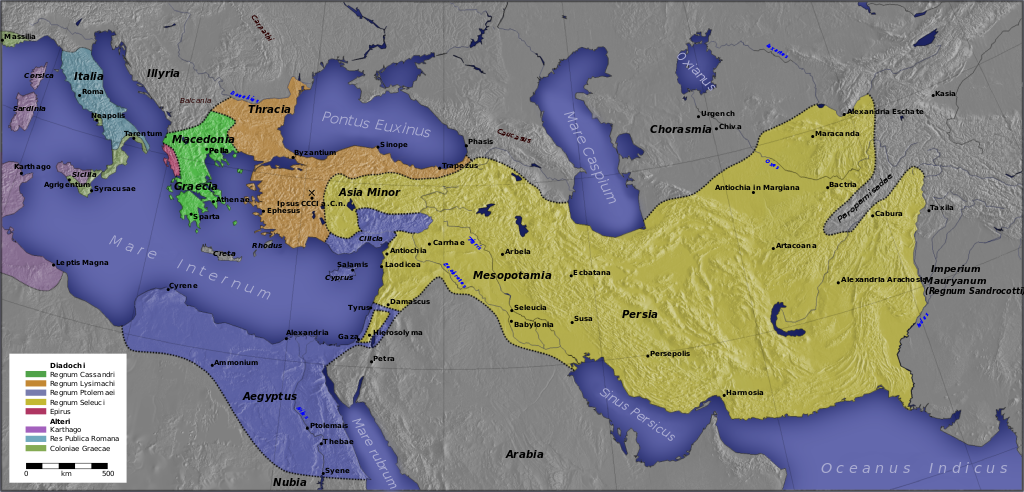
As Alexander's empire lacked a clear line of succession, his top generals, known as the Diadochi, vied for control over different parts of his vast realm.
301-198 BCE
-
Ptolemaic Kingdom
 occupation by empirecultural conversion
occupation by empirecultural conversion
-

In the aftermath of the Wars of the Diadochi, Palestine came under the rule of the Ptolemaic Dynasty of Egypt. Ptolemy I Soter, one of Alexander's trusted generals, established the Ptolemaic Kingdom, with its capital in Alexandria.
198-167 BCE
-
Seleucid Empire
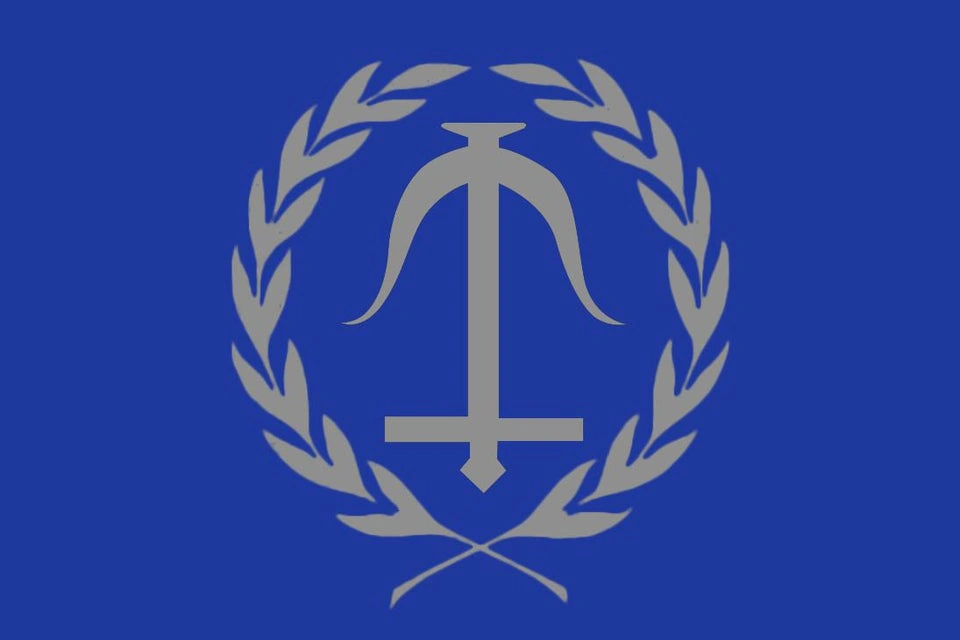 occupation by empirecultural conversionreligious persecution
occupation by empirecultural conversionreligious persecution
-

The death of Ptolemy IV in 204 BC was followed by a bloody conflict over the regency. Seeking to take advantage of this turmoil, Antiochus III, ruler of the Seleucid Empire, started the Fifth Syrian War. He completed the subjugation of the area in 198 BC. The Seleucids forced Hellenistic culture to the region, which clashed with local Jewish traditions, leading to tensions and revolts, including the Maccabean Revolt.
167-63 BCE
-
Hasmonean Dynasty
 self-governance
self-governance
-
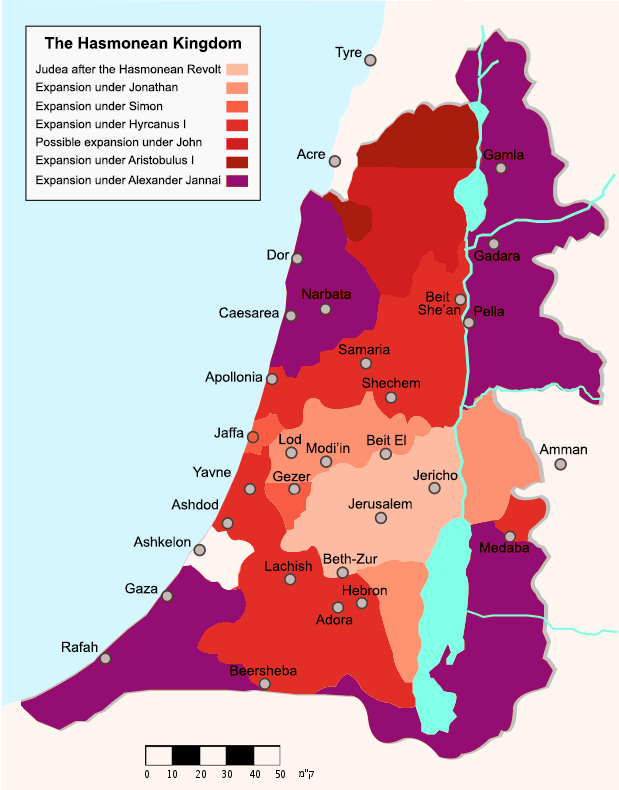
Religious persecution of the Jews led to the Hasmonean (Maccabean) revolt in 167 BCE, following which the Hasmonean kingdom was gradually established in 140 BCE. The success of the Hasmonean rebellion is commemorated to this day by the festival of Hanukkah.
63 BCE-330 CE
-
Roman Empire
 occupation by empirereligious persecution
occupation by empirereligious persecution
-

After conquering the Hasmoneans, the Romans ruled Palestine, during which time Jesus Christ lived and was crucified. The Jewish revolts of this period, including the Great Jewish Revolt and Bar Kokhba's revolt, had significant impacts, including changing the name of the area to the foreign name Palestine and destroying the second Jewish temple.
-
Palmyrene Empire
.png) occupation by empirereligious persecution
occupation by empirereligious persecution
-
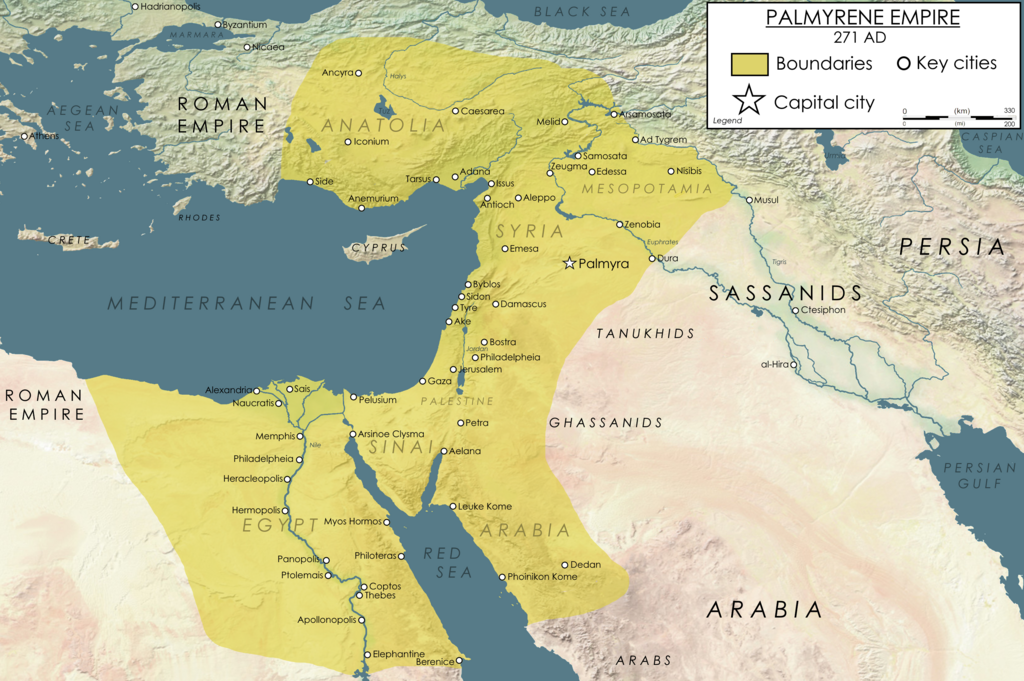
The Palmyrene Empire, centered in the city of Palmyra (modern Syria), expanded its influence into the region in 268 CE. It emerged as a powerful state under Queen Zenobia, taking advantage of the weakening Roman Empire to control territories across the eastern Mediterranean. However, this dominance was short-lived, as the Roman Emperor Aurelian crushed the empire in 273 CE, restoring Roman rule.
330-638
-
Byzantine Empire
 occupation by empirereligious persecution
occupation by empirereligious persecution
-

In 330 CE, the Roman Emperor Constantine I founded the city of Constantinople (modern-day Istanbul) and established it as the new capital of the Christianized Roman Empire. This marked the beginning of the Byzantine Empire as a continuation of the Eastern Roman Empire. They held control over Palestine until their defeat by Muslim forces.
-
Sassanid Empire
 occupation by empirelimited self-governance
occupation by empirelimited self-governance
-

During the Byzantine-Sassanian War, the Persian Sassanian Empire conquered Jerusalem in 614 CE and controled the region. However, it was relatively short-lived, In 628 CE the Byzantines, led by Emperor Heraclius, regained control of Jerusalem, marking the end of the Sassanian occupation.
638-661
-
Rashidun Caliphate
 occupation by empirecolonizationdiscrimination
occupation by empirecolonizationdiscrimination
-

Following the death of Prophet Muhammad, the four "Rightly Guided Caliphs" expanded the Muslim empire. After winning the Battle of Yarmouk in 636 CE against the Byzantine Empire, the second Caliph, Umar ibn al-Khattab, conquered Jerusalem in 638 CE after a siege.
661-750
-
Umayyad Caliphate
 occupation by empirecolonizationdiscrimination
occupation by empirecolonizationdiscrimination
-
.svg.png)
In 661 CE following the assassination of Ali ibn Abi Talib the Rashidun Caliphate came to an end. After disputes over leadership within the Muslim community, Muawiya ibn Abi Sufyan, the governor of Syria and a member of the Umayyad family, declared himself caliph, marking the beginning of the Umayyad Caliphate. the Umayyads established Damascus as their capital. Under their rule, Islamic influence solidified, and notable structures like the Al-Aqsa Mosque and Dome of the Rock were built.
750-970
-
Abbasid Caliphate
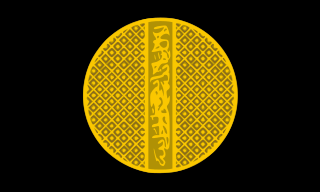 occupation by empirecolonizationdiscrimination
occupation by empirecolonizationdiscrimination
-

After overthrowing the Umayyads, the Abbasids took control, shifting the central caliphal capital to Baghdad. Though their direct rule in Palestine waxed and waned, their cultural and religious influence was significant.
970-1099
-
Fatimid Caliphate
 occupation by empirecolonizationdiscrimination
occupation by empirecolonizationdiscrimination
-
In 970, the Fatimids, a Shiite Muslim dynasty originating from North Africa, conquered Palestine from the Abbasids. They lost control temporarily to the Seljuks and later to the Crusaders.
-
Seljuk Empire
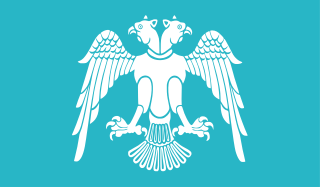 occupation by empirecolonizationdiscrimination
occupation by empirecolonizationdiscrimination
-
.png)
In 1071, following a crucial victory over the Byzantine Empire at the Battle of Manzikert, the land was conquered by the Seljuk Turco-Persian Muslims, a rising power in the Islamic world. The Seljuks ruled the land until 1098, when the Fatimids returned for a number of months before the Crusader invasion of the Middle East.
1099-1291
-
Crusader States
 occupation by military campaignsreligious persecution
occupation by military campaignsreligious persecution
-
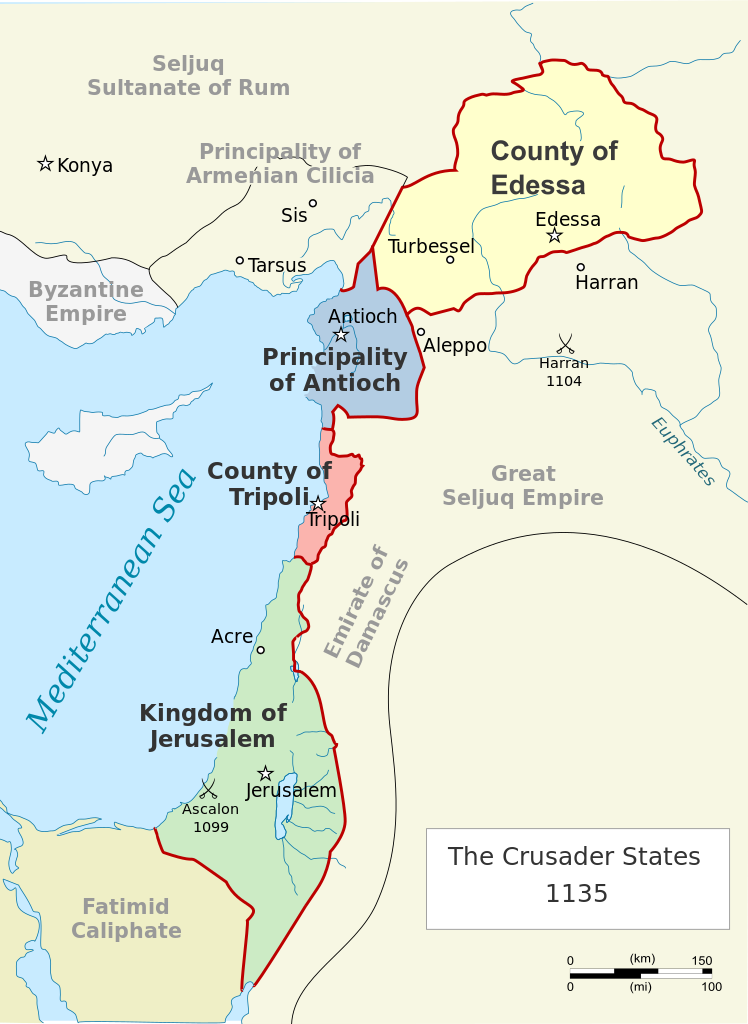
European Christians established several Crusader states in the region, including the Kingdom of Jerusalem. They were eventually expelled by Muslim armies.
-
Ayyubid Sultanate
 occupation by empirecolonizationdiscrimination
occupation by empirecolonizationdiscrimination
-

In 1187, Salah ad-Din, the founder of the Ayyubid dynasty hailing from a Kurdish family, achieved a pivotal victory over the Crusaders at the Battle of Hattin, leading to the capture of Jerusalem. However, after Salah ad-Din's death in 1193, internal strife weakened the Ayyubid state. The Seventh Crusade, led by Louis IX of France, reclaimed some of the land, mainly the north coast with the capital at Acre. Ultimately, the Ayyubid era in Palestine ended with the invasion of the Mongols in 1260.
1260-1516
-
Mongol Empire
 occupation by empire
occupation by empire
-
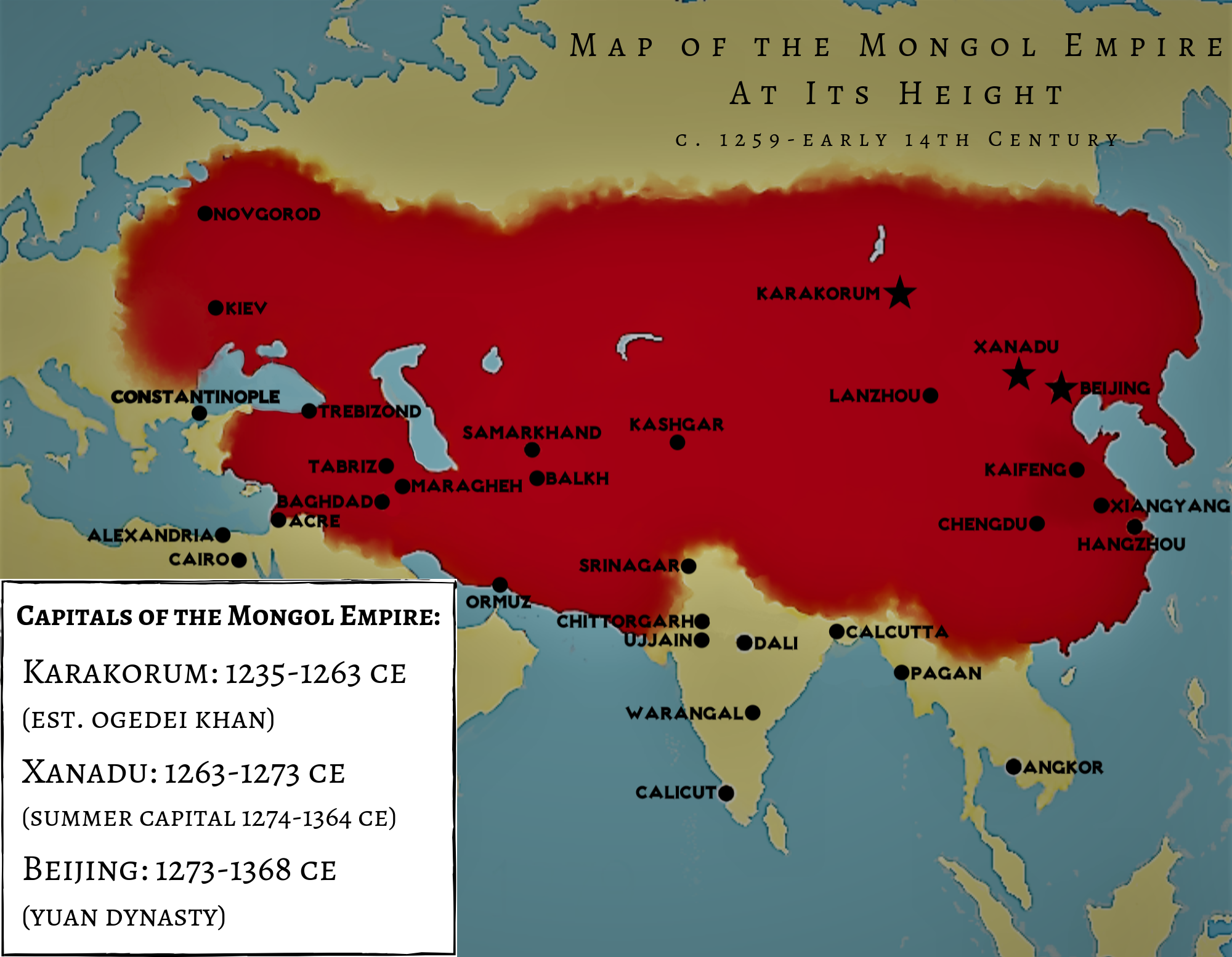
The Mongols, led by Hulagu Khan, captured and devastated several major cities moving west towards Palestine. However, when they invaded north Palestine, the Mamluks had managed to organize a resistance. In 1260, the Battle of Ain Jalut took place, where the Mamluks confronted and defeated the Mongols. This victory halted the Mongol advance into the region, and the Mamluks successfully repelled further Mongol incursions.
-
Mamluk Sultanate
 occupation by empirecolonizationdiscrimination
occupation by empirecolonizationdiscrimination
-
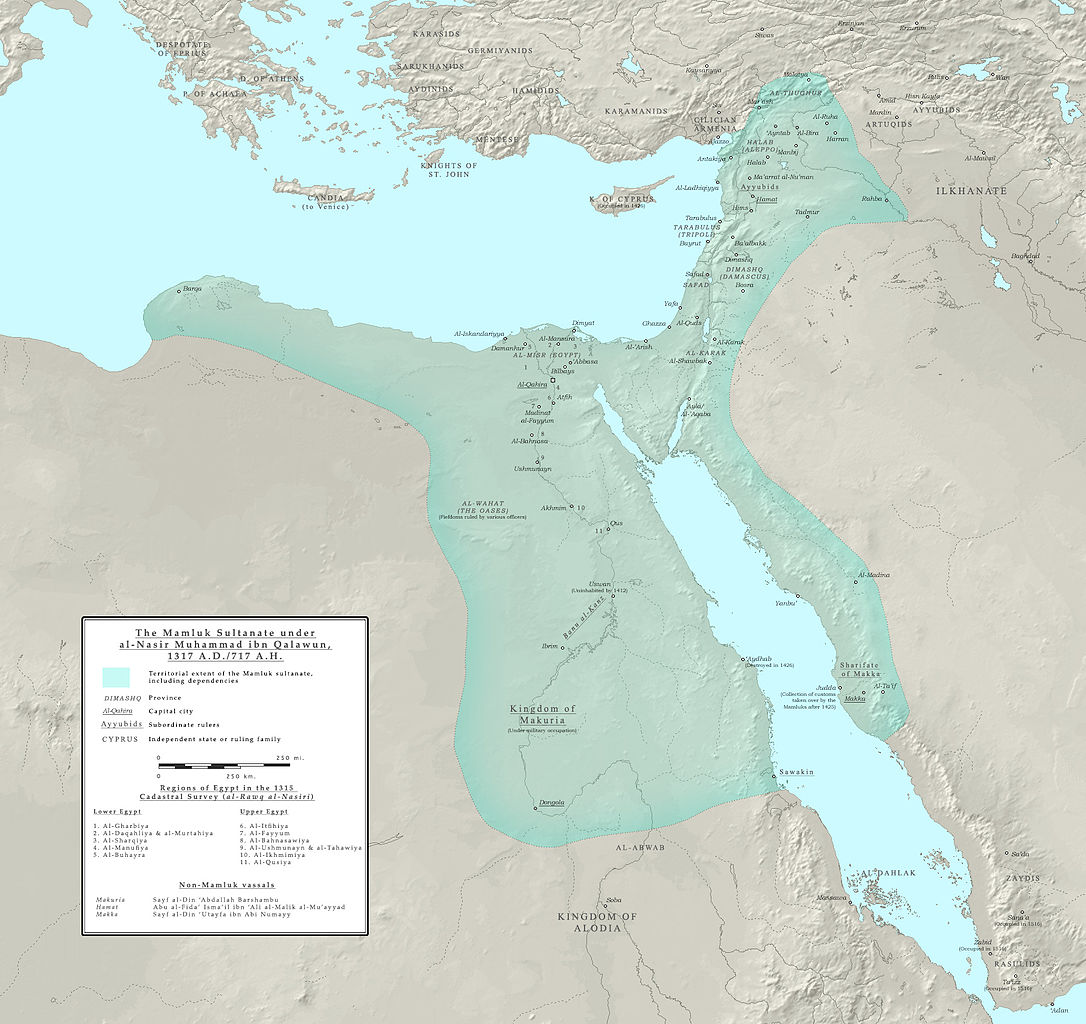
The Mamluks, of Turkic and Circassian origin, ruled Palestine after defeating the Mongols and expelling the Crusaders. They centered their rule in Egypt but controlled Palestine as a province.
1516-1917
-
Ottoman Empire
.svg.webp) occupation by empirecolonizationlimited self-governance
occupation by empirecolonizationlimited self-governance
-

In 1516 the land was conquered by the Ottoman Turkish Empire. The region was organized into several districts or "sanjaks", and the land was distributed among military and administrative elites. These individuals, referred to as timariots, held the land as a kind of fief in exchange for their services to the Ottoman state. The empire's involvement in World War I on the side of the Central Powers ultimately led to its defeat.
-
French Republic
 occupation by empire
occupation by empire
-

In February 1799 the French Army marched from Egypt with 13,000 troops, conquering Gaza, sieging and conquering Jaffa in early March, and then sieging Acre from March to May. After a failed final assault the French army withdrew to Egypt.
-
Ottoman Egypt
 occupation
occupation
-

Muhammad Ali Pasha was appointed as the Ottoman governor of Egypt in 1805. However, he gradually consolidated power and autonomy within Egypt, effectively establishing his own dynasty known as the Muhammad Ali dynasty.
In 1831, in his efforts to expand his own power and influence within the broader context of the Ottoman Empire, he sent his forces, led by his son Ibrahim Pasha, to conquer the Levant in what is known as the Egyptian-Ottoman War. The Egyptian rule faced opposition from local and regional forces, as well as international pressure. In 1840, a coalition of European powers intervened militarily in support of the Ottoman Empire to curtail Muhammad Ali's expansionist ambitions. The conflict, known as the Oriental Crisis, culminated in the Treaty of London in 1840, where Muhammad Ali was compelled to withdraw his forces from the Levant.
1917-1948
-
British Mandate
 occupation by empireallowed further Arab colonization
occupation by empireallowed further Arab colonization
-

In 1917, during World War I, Britain took control of Palestine through the British conquest of the region from the Ottoman Empire. The campaign, known as the Sinai and Palestine Campaign, was led by General Edmund Allenby. The occupation of Palestine by British forces continued under the League of Nations mandate system, formalized with the issuance of the Balfour Declaration in 1917.
1948-Present
-
Modern State of Israel
 self-governance
self-governance
-
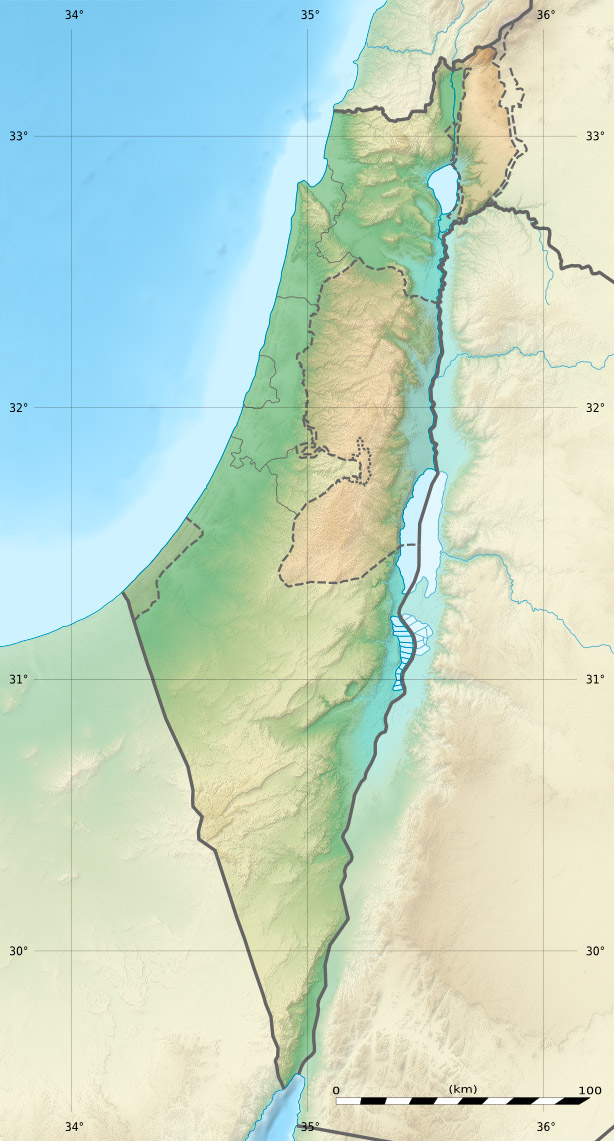
On November 29, 1947, the land was divided between the Jews and the Arabs according to a United Nations resolution. While the Jewish leadership accepted the resolution, the Arab leaders rejected it and launched a war. Nevertheless the State of Israel declared its independence on May 14, 1948. Seeking to prevent the establishment of the new state, the neighboring Arab states, including Egypt, Jordan, Syria, and Iraq, intervened militarily, but the young under-armed country prevailed and defeated them.
Israel is a democratic Jewish-majority state, also known as the Start-Up Nation due to its remarkable success in fostering a robust ecosystem of innovation and entrepreneurship. Israel has transformed from a developing nation into a highly developed and technologically advanced economy, a testament of its strength.
1995-Present
-
Palestinian Terrirories
 limited self-governance
limited self-governance
-

Following the 1993 Oslo Accords, negotiations between Israel and the Palestine Liberation Organization (PLO) paved the way for the creation of the Palestinian Authority (PA) as an interim self-governing body for the Palestinian territories. In 1994, under the leadership of Chairman Yasser Arafat, the PA assumed control over the Gaza Strip and parts of the West Bank.
2005-Present
-
Gaza under full PA
 self-governance
self-governance
-
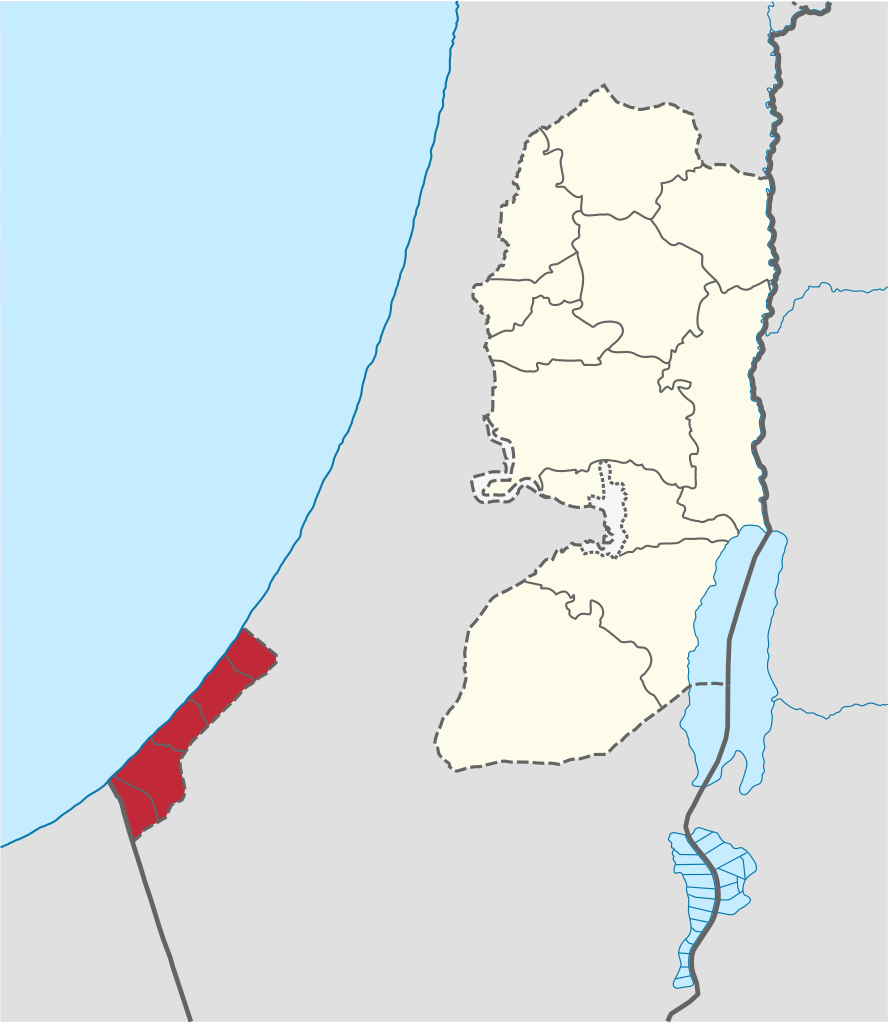
In 2005, Israel unilaterally withdrew its military forces and dismantled all settlements in Gaza as part of the disengagement plan, and the territory was handed over to full Palestinian control.
